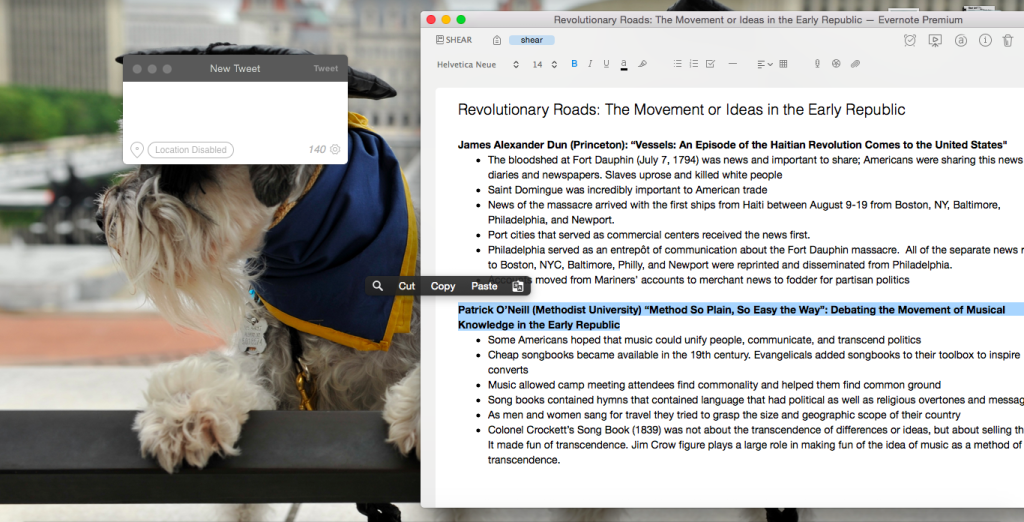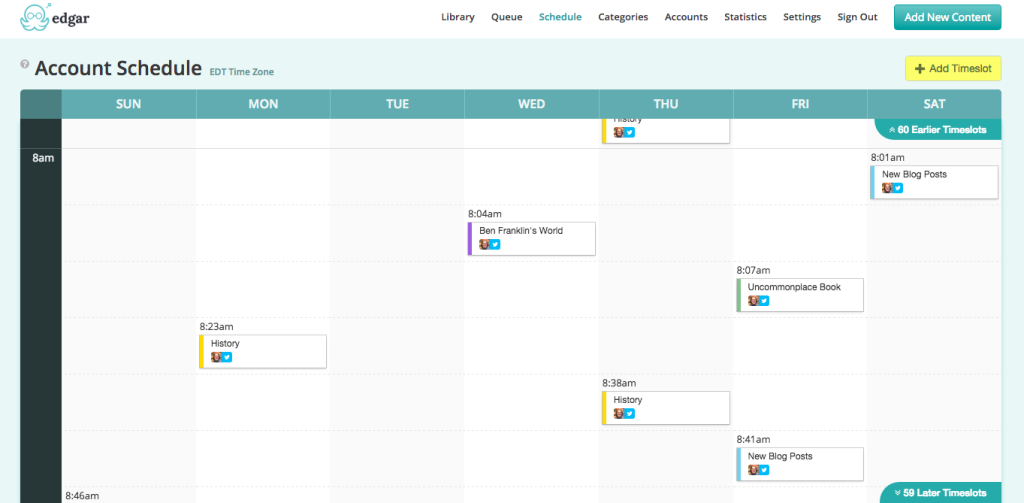While tweeting created awareness, writing to the authors created change. It’s a small change, but small changes add up! So going forward I intend to think about not just if I should say something, but how and where I say it. There’s a difference between creating awareness and creating change and the mediums we use to communicate are often more effective at doing one than they are the other.
Perfectly Practical Tips for Using Twitter
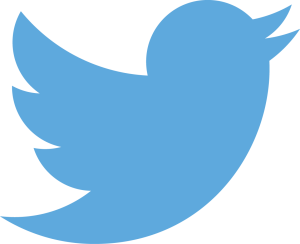 Jointly authored by Liz Covart and Joseph Adelman
Twitter is a deceptively simple tool. With just 140 characters to work with, it can seem at times like it takes barely any work at all to come up with a tweet. There's not much room to say anything, right? But trying to say something meaningful in 140 characters is an art, and takes practice and consideration.
Jointly authored by Liz Covart and Joseph Adelman
Twitter is a deceptively simple tool. With just 140 characters to work with, it can seem at times like it takes barely any work at all to come up with a tweet. There's not much room to say anything, right? But trying to say something meaningful in 140 characters is an art, and takes practice and consideration.
From our conversations, we have realized that most of the guides to using Twitter focus primarily in generating a follower base and otherwise building an audience. That's worthwhile, of course, but it means that there is room for something that discusses how to craft an individual tweet, including how to use links, hashtags, and other tools in tweets.
We hope this guide will prove helpful for individual Twitter novices, but also for classes and other group projects where not everyone knows or understands how to write tweets.
Twitter Anatomy
To begin, here are some of the basic mechanics of how Twitter works:
- Tweets can be no more than 140 characters, including spaces and punctuation as well as any links or images you include.
- If you tweet from Twitter, the service will automatically shorten the URL you wish to share down to 24 characters. All you need to do is cut or copy the URL you want to share from your browser and paste it into your new tweet box in Twitter. [1]
- After you use a shortened link, you will have approximately 118 characters left for your tweet.
- Twitter will automatically embed any image you attach to a tweet; the link Twitter creates takes up 23 characters. Twitter allows users to add up to 4 images to each tweet. After your first image, additional photos do not count against your character limit.
- You also want to leave 10-40 characters free, if possible, as research shows tweets with less than 140 characters receive more engagement.[2]
- You can use a hashtag to link your tweet to others on a similar topic. Hashtags are the words with # in front of them. They let users know that a tweet is part of a larger conversation by defining either the audience or topic the tweet addresses. For example, a tweet with #Twitterstorians is a tweet for historians on Twitter. #AmRev denotes a tweet about the American Revolution. See the History Hashtags list for a comprehensive list of history hashtags.
- You can include other feeds in your tweet by including the handle, which begins with @. However, you should avoid beginning a tweet with the @-symbol, because only people who follow both accounts will be able to see the tweet.
- For more advanced users, you can use a third-party app to schedule tweets. See Liz's post on Twitter strategies for details.
- You can reply to your own tweet to create a chain that Twitter will display to your readers.
- Attribution is important. Anytime you share someone else’s blog post, news article, or video, you want to create a tweet that attributes the content to that user.
How to Create a Tweet
Here's an example of a real tweet that Liz created to share a blog post about a Twitter hashtag.
A few weeks ago, Megan Kate Nelson published “#FollowWomenWednesday” on her blog Historista. The post discusses how social media users share content generated by men more often than they share content authored by women. Megan created the hashtag #FollowWomenWednesday as a way to help call attention to this bias. I found this post intriguing and wanted to share it.
When I create a tweet, I use the headline the author created, craft my own headline, state a reaction to the post, or pose a provocative question about the information contained in the post I want to share.
In the above example, I created the following tweet: “What a Great Idea! #FollowWomenWednesday @megankatenelson #Twitterstorians #Acwri http://histry.us/1Nx6TTS.”
The tweet offers my thoughts on the post, Megan’s headline, her Twitter handle, a link to her post, and hashtags for audiences I think might also be interested in her article, i.e. fellow historians (#Twitterstorians) and academic writers (#acwri).
Whenever possible you want to include the Twitter handle of the source or person who created the content (i.e. @megankatenelson, @thejuntoblog). Perform a quick Google Search of “Name of Blogger or Blog Twitter” If the blogger or source does not list their Twitter handle on their blog.
Tweet Anatomy
My tweet for Megan’s article is 108 characters; 81 characters for my note about the blog post and 23 characters for a shortened link to the article. As tweets with images share more often than text-only tweets, I add an image when possible. In the above example, I dragged and dropped the image Megan included in her post onto my desktop and then clicked the “add photos” icon and selected the image to add it to my tweet. My final tweet contains 128 characters.
We hope this post has given you an idea of how Twitter works at the level of an individual tweet. It's a fun way to interact with other people, whether in a professional or personal setting, and once you're comfortable with the format writing tweets comes much more naturally. ___________________________
[1] If you prefer, you can also sign-up for a URL link shortening service like bit.ly. The advantage to a service like bit.ly is you can track how many times people clicked on the link you shared. Additionally, you can purchase a custom short URL of 8-10 characters and use it as your shortened URL. For example, Liz purchased a custom short URL so all the links she tweets look something like this: http://histry.us/1234abc
[2] Research shows 100 characters to be the ideal length for a tweet. Additionally, some third-party Twitter apps still add users’ handles and ‘RT’ before your original tweet when they retweet you. Leaving at least 10 characters free should ensure that these third-party apps will tweet you whole message when retweeted.
How To Tweet A Conference Panel
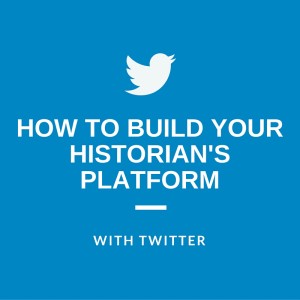 If you have attended a conference during the past two or three years you have likely witnessed the following scene: three to four panelists at the front of the room reading their papers one-by-one, while several people in the audience alternate between watching the presenters and looking down at their smartphones or tablets while frantically texting.
This is the scene of many #Twitterstorians at work live-tweeting a conference.
If you have attended a conference during the past two or three years you have likely witnessed the following scene: three to four panelists at the front of the room reading their papers one-by-one, while several people in the audience alternate between watching the presenters and looking down at their smartphones or tablets while frantically texting.
This is the scene of many #Twitterstorians at work live-tweeting a conference.
In this post, you will find tips and tricks for how you can live-tweet a conference panel as well as why I think conference tweeting has become a necessary part of the profession.
Why Tweet a Conference Panel
Tweeting conference panels has become a mainstream activity at professional conferences.
Conference tweets help spread new ideas, start conversations about those new ideas, and allow colleagues who couldn’t attend to stay up-to-date with the latest professional information.
Conference tweets also serve as a powerful public relations tool. Anyone interested in a particular profession can gain insight into the inner-workings of that profession by following tweets from a professional organization’s annual conference.
In the case of History, not only does tweeting information from a conference help fellow historians gain insight into what areas colleagues are exploring, but it helps non-historians gain insight into the work historians do.
Conference Tweet Etiquette
Caution: Tweeting conference panels is important work that should not be undertaken lightly. Live-tweeting a conference requires a high-level of mental focus. To tweet well you must really pay attention to the presenters and the ideas they convey.
Conference Tweet Etiquette
There are several stated and unstated rules you should follow if you want to be a successful and professional conference tweeter.
1. Know Your Venue: Tweeting from conferences has become an accepted professional practice. However, it would be unprofessional to tweet from a seminar that has a reputation as a workshop for fresh ideas.
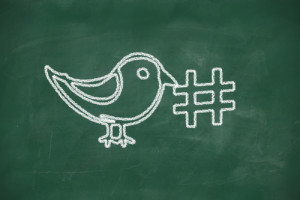 2. Use the Hashtag: Nearly every conference has an official hashtag that you should use when you tweet. The hashtag serves several purposes:
2. Use the Hashtag: Nearly every conference has an official hashtag that you should use when you tweet. The hashtag serves several purposes:
1. It tells your followers that you are at a conference.
2. The hashtag allows anyone interested in the conference to follow tweets in context and in sequence.
3. Hashtags make it easier for conference organizers to aggregate tweets.
4. It is a powerful networking tool that will connect you with other conference-goers.
3. Give Credit: Always attribute the ideas of a presenter to that presenter. All tweets containing another’s idea should contain their name. Proper etiquette requires that you first tweet their full name, affiliation, and paper title (sometimes this requires more than one tweet) and then use either their last name or twitter handle (preferred if they have one) at the start of each subsequent tweet.
4. Number Your Tweets: If you need more than 140 characters to tweet a presenter’s idea, number your tweets. The number should be at the end of the tweet and in parentheses: (1), (2), (3). You should number your tweets as a sequence if you know how many tweets you need to convey an idea: (1/3), (2/3), (3/3). Numbering your tweets helps followers know that your tweets are part of a sequence.
5. Issue Corrections: Tweeting a conference panel is fast-paced work. No one performs it flawlessly. If you discover that you mis-tweeted a panelist’s ideas, delete your original tweet and issue a corrected tweet.
You should consider letting panelists know that you are willing to issue corrections. You can tell them in person or tweet at the end of a panel, or the conference, that you will gladly correct a mistake if someone finds one.
6. Identify Yourself If Requested: Some conference organizers request that you introduce yourself as a #Twitterstorian or tweeting attendee to the panelists before a panel starts. In my experience, this happens only at academic conferences and more of these conferences are rendering this introduction unnecessary by issuing badges that say “I Tweet” to those who tweet.
7. Do Your Best: Conference tweets represent presenters' ideas and convey an image of you as a professional historian to colleagues and the outside world. Do your best to convey ideas, the profession, and you accurately.
 How To Tweet A Panel
How To Tweet A Panel
There are two ways to tweet a conference panel: live or after the fact.
Those who live-tweet use their smartphones, tablets or laptops to type tweets as panelists speak. Some conference attendees prefer to tweet after they have paid attention to the entire panel and digested its ideas. In both cases, you should introduce and attribute your tweets to the person and paper where they came from.
How to Live Tweet A Conference Panel
Many Twitterstorians live-tweet from their smartphones or tablet devices. I prefer to tweet from my laptop because I can take all the notes I want and then cut and paste what I want to tweet with ease.
I also prefer to live-tweet from my laptop because I type much faster on a full-sized keyboard. Capturing notes on my laptop allows me to focus more on ideas instead of on whether my thumbs hit the right key on a touchscreen device. Additionally, typing notes enables me to capture the context of an idea and better judge if and how it should be tweeted.
My Live-Tweet Workflow
Equipment/Tech: Laptop, smartphone, power cords, Evernote (my favorite note-taking app) and Tweetbot (my favorite Twitter app).
Step 1: Sit by a power outlet. Whenever possible, I show up to a panel early and sit near an outlet. This allows me to charge and save my laptop and smartphone batteries for rooms where I cannot sit by an outlet.
Step 2: Connect to the internet. History conferences have a spotty record when it comes to providing free WiFi. Many #Twitterstorians tweet from their smartphones because they are portable and already connected to the internet. I prefer to work on my laptop.
Before the panel begins, I either connect to the free WiFi or create a private WiFi hotspot for my laptop with my smartphone.
Step 3: Make note of speakers, paper titles, and twitter handles. I try to do this the night or morning before, but if this doesn’t work, I pull out my conference program, flip to the appropriate page, and place the open page on the floor in front of me or on the chair next to me (if available).
Although, conference programs tell you the names and proper spellings of the speakers and their paper titles, I have yet to see one include the presenters' Twitter handles. I perform a quick search to see if I can locate one. Often I attribute tweets using the presenter's last name.
Step 4: Use shortcuts/hotkeys. Hotkeys or shortcuts won’t help you on a smartphone or tablet, but they can simplify your live-tweet workflow on a laptop.
If you are logged into Twitter you can launch a new tweet box by pressing [N].
I set [option + /] as my hotkeys for Tweetbot. I prefer to use Tweetbot because I can launch a new tweet box while I take notes in Evernote.
Other shortcuts/hotkeys you might find helpful are those for cut and paste. On a Mac the keyboard shortcut for cut is [command+ c]. Use [command+ v] for paste.
Step 5: Tweet.
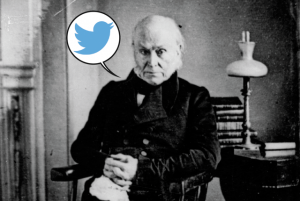 Conclusion
Conclusion
I started tweeting conference panels to help colleagues who could not attend the conference. However, the more I have tweeted and interacted with non-conference attendees, the more I have realized that conference tweets don’t just help fellow historians catch a glimpse of the ideas being discussed, they help anyone interested in history gain insight into the inner-workings of the historical profession. This is an aspect of conference tweeting that the profession should welcome. The more people who understand what we do and why our work is important, the easier time history departments and organizations will have finding funding and students.
Share Your Tips!
Do you live-tweet conference panels? Do you have helpful tips to share?
Twitter Strategies for Historians
 Do you have a Twitter strategy?
Do you have a Twitter strategy?
In this post, you will discover easy tactics you can use to increase awareness about history and your research and build your historian’s platform with Twitter.
Twitter Strategies
The are three strategies when it comes to Twitter: Conversation, Content Curation, and Spam Marketing.
I employ conversation and content curation as part of my Twitter strategy.
Conversation
The conversation strategy involves tweeting when you want to have a conversation.
Users who follow this strategy log onto Twitter when they have time. They scan their timeline (the feed of everyone you follow), curated lists (lists you create with like users; I created a list of “historians”), or favorite hashtags (conversation topics) to see what conversations people are having and whether they want to contribute their thoughts. Sometimes conversational users start a conversation by tweeting a message or question.
Participating in conversations makes Twitter fun. However, conversations represent only half the power of Twitter.
Content Curation
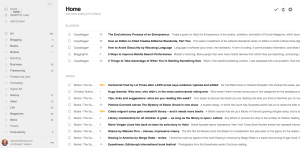 Do you like discovering interesting blog posts, news stories, or information about new exhibits, events, or places to visit or eat?
Do you like discovering interesting blog posts, news stories, or information about new exhibits, events, or places to visit or eat?
Many Twitter users do, which is why becoming a content curator can help you build a following on Twitter.
A content curator finds interesting information to share and shares it.
I am a content curator.
Every morning I log into Feedly, an app that allows you to find, subscribe to, view, organize, and share blog content, news articles, and YouTube videos. The app displays the headlines for all of the internet content I subscribe to within categorized lists. As I eat breakfast, I scan article headlines. When I find an interesting title, I click on it so Feedly opens the full article in a new internet browser tab. I skim the full article and decide if I want to read and/or share it. If I want to share it, I create and schedule a tweet for the article (more on scheduling tweets below).
Spam Marketing
I do not recommend this strategy, but it exists. Some Twitter users create accounts for the sole purpose of tweeting ads for their product or service.
How to Tweet When You Aren’t On Twitter
If you follow me on Twitter (@lizcovart), you have likely noticed that I tweet a lot and if you really pay attention to my feed you know that I tweet the same articles 2, and sometimes 3, times per day.
 In fact, I tweet at least once per hour; I tweet 2 or 3 times per hour when my followers are most active.
In fact, I tweet at least once per hour; I tweet 2 or 3 times per hour when my followers are most active.
With all of this tweeting you may be surprised to learn that most days I check Twitter 2 or 3 times per day for a total of 10-15 minutes.
Would you like to know the secret of how you can use Twitter all the time and yet only spend 10-15 minutes actively using the platform?
My secret: I use a scheduling service to schedule my tweets.
There are many services you can use either for free or for a monthly or annual fee. They include Buffer, Edgar, SproutSocial, HootSuite, and Social Oomph. I have used two of these services.
Buffer
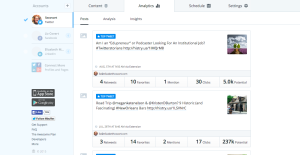 Buffer allows you to schedule up to 10 tweets for free at times you choose. You must join Buffer's "Awesome Plan" to schedule more than 10 tweets. The Awesome plan costs $102 per year, or $10 per month, and it allows you to schedule an unlimited number of tweets.
Buffer allows you to schedule up to 10 tweets for free at times you choose. You must join Buffer's "Awesome Plan" to schedule more than 10 tweets. The Awesome plan costs $102 per year, or $10 per month, and it allows you to schedule an unlimited number of tweets.
At first, 10 tweets per day proved enough. As I followed more blogs and befriended more bloggers, 10 tweets became inadequate. I upgraded to the unlimited tweet plan within 4 months.
Buffer's Awesome plan enabled me to schedule tweets on a 24-hour schedule, which allowed me to reach new audiences. It also permitted me to schedule tweets multiple times per day.
I used Buffer for 18 months and the service worked great until I started podcasting and needed a more robust service to share my episodes evenly.
Edgar
I love Edgar. Edgar uses a calendar and category queues to share your content evenly. Unlike Buffer, Edgar stores all of the content you put into your queues for continued use.
When you sign-up for Edgar, the platform invites you to create content queues or categories. Categories represent the topics of the content you like to share.
After you create your category queues, you fill them with content. I used a feature called “bulk upload” to upload blog and podcast tweets from a spreadsheet into the appropriate categories; I add content to my “history” queue every morning.
Before you can put Edgar to work, you have to create a content calendar. A content calendar is a schedule of when you want content from each queue to tweet.
With calendar and content in place, Edgar will tweet what you want, when you want.
What I love about Edgar is that once the software tweets a preloaded tweet, it moves that tweet to the bottom of the queue. Edgar will tweet your content again once it shares all of your other preloaded tweets.
Edgar saves me time and ensures that all my podcast episodes share evenly. Additionally, Edgar has made it easy for me to share and call attention to old blog content, much of which is "evergreen" or information that is always good.
Final Thoughts
I love Twitter and have found it to be a powerful tool to practice digital public history. Admittedly, not everyone needs a $49 per month scheduling service to build their historian’s platform with Twitter. I use the service to promote my podcast and history. I am also willing to make this investment because Twitter is a large component of how I work as digital public historian.
Although I use a scheduling service, I do not abuse it like many internet marketers do. I limit my scheduled tweets to 1-3 time per hour, I tweet two articles that other people wrote before I tweet a Ben Franklin’s World episode or a blog post I wrote. I also pause my scheduling service when I go on vacation or live-tweet conferences.
More on how to tweet a conference in my next post.
Why I Tweet & Why You Should Too
 Do you use Twitter?
Would you like to know more about how you can use Twitter to build your historian’s platform?
Do you use Twitter?
Would you like to know more about how you can use Twitter to build your historian’s platform?
This post is the first in a 3-part series on how I use Twitter and how you can use it to build your historian’s platform. In this post, I will reveal why I love Twitter and why I use it.
The second post will discuss Twitter strategies you can use to draw attention to history and your research. The series will conclude with tactics for tweeting conference panels.
Why I Tweet
Twitter is my social media network of choice. I dabble on Facebook, Google+, LinkedIn, and Goodreads, but Twitter is where I prefer to spend my time on social media.
I love Twitter for three reasons:
1. Conversations and Networking
Twitter serves as my virtual watercooler. I am an unaffiliated scholar who often works from home or in cafes and libraries. This work-life offers great flexibility, but it can often be lonely. Twitter helps me cut the loneliness by allowing me to interact with colleagues when I want and need to.
 When I need a break from my work, I visit Twitter to see who else is hanging out online. I often start with the people on my friends and family feed, but I also check in with my favorite hashtags to see if anyone is talking about topics that interest me. You can find all sorts of different conversations if you know which hashtags to follow.
When I need a break from my work, I visit Twitter to see who else is hanging out online. I often start with the people on my friends and family feed, but I also check in with my favorite hashtags to see if anyone is talking about topics that interest me. You can find all sorts of different conversations if you know which hashtags to follow.
Note on Hashtags: Hashtags are the words with # in front of them. They let users know that a tweet is part of a larger conversation by defining either the audience or topic the tweet addresses. For example, #Twitterstorians is a tweet for historians on twitter. #RedSox lets fellow fans know you want to talk about the team.
Chatting on Twitter has helped me expand and maintain my social and professional networks. I have met many fantastic colleagues on Twitter by sharing information about history, asking questions, and by answering the questions of others.
 I frequently meet fellow historians on Twitter before I meet them in person. Our virtual relationship gives us an advantage. When we meet in person at a conference, or during a research trip, we often fall into an easy conversation because we already know what we like to talk about. Moreover, since we already know each other we are keen to introduce each other to our friends, which expands both of our professional and social networks.
I frequently meet fellow historians on Twitter before I meet them in person. Our virtual relationship gives us an advantage. When we meet in person at a conference, or during a research trip, we often fall into an easy conversation because we already know what we like to talk about. Moreover, since we already know each other we are keen to introduce each other to our friends, which expands both of our professional and social networks.
Twitter Tip: If you would like to meet other historians on Twitter checkout the hashtags #Twitterstorians, #Historians, and #PublicHistory.
2. News Source
Twitter provides me with a quick and easy way to check the news. Between the news sources and people I follow, I almost always know when something big, tragic, or important has happened. The people I follow almost always share links to interesting history, news, and sports articles too.
3. Digital Public History
Twitter not only connects historians with colleagues, it also connects people who love history with history and historians.
 Twitter allows users to share information quickly and unlike Facebook and other platforms that use algorithms to curate feeds, anyone who follows you or the hashtags you use will see the information you share.
Twitter allows users to share information quickly and unlike Facebook and other platforms that use algorithms to curate feeds, anyone who follows you or the hashtags you use will see the information you share.
Historians can, and do, use Twitter to increase awareness about history-related exhibits, tours, books, events, blog posts, conferences, and news. Sharing and promoting this information helps non-historians stay up-to-date with history-related news. It also helps them feel more comfortable about asking historians questions about history, what historic sites they should visit, and what history books they should read. This type of tweeting and interaction qualifies as public history.
Conclusion
Twitter allows historians to connect with colleagues, get news, and practice digital public history. This is why I love it.
In my next post, I will reveal strategies you can use to better enjoy Twitter and for how you can use it to build your historian’s platform.



